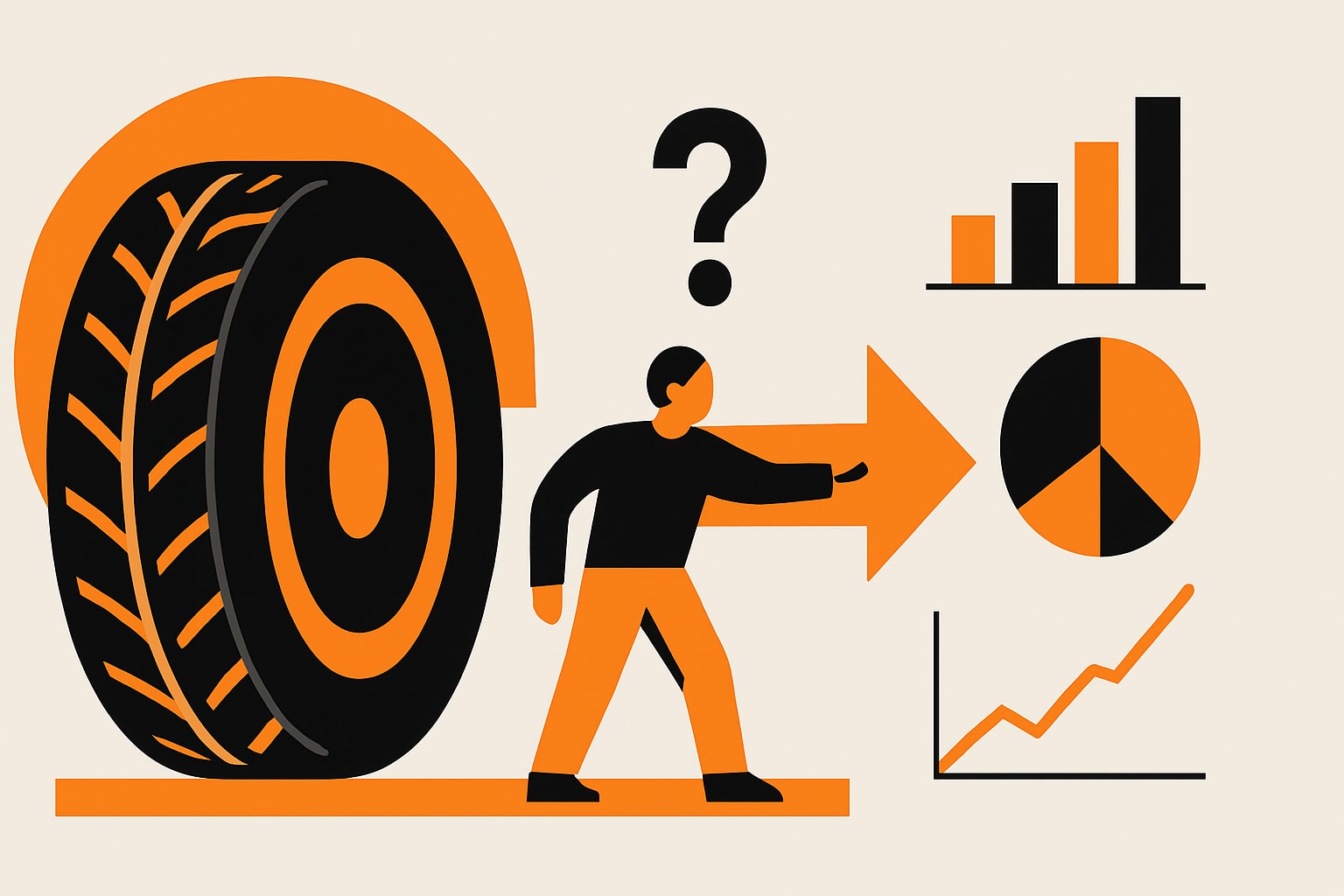Vodafone bills: Everything you need to know at a glance
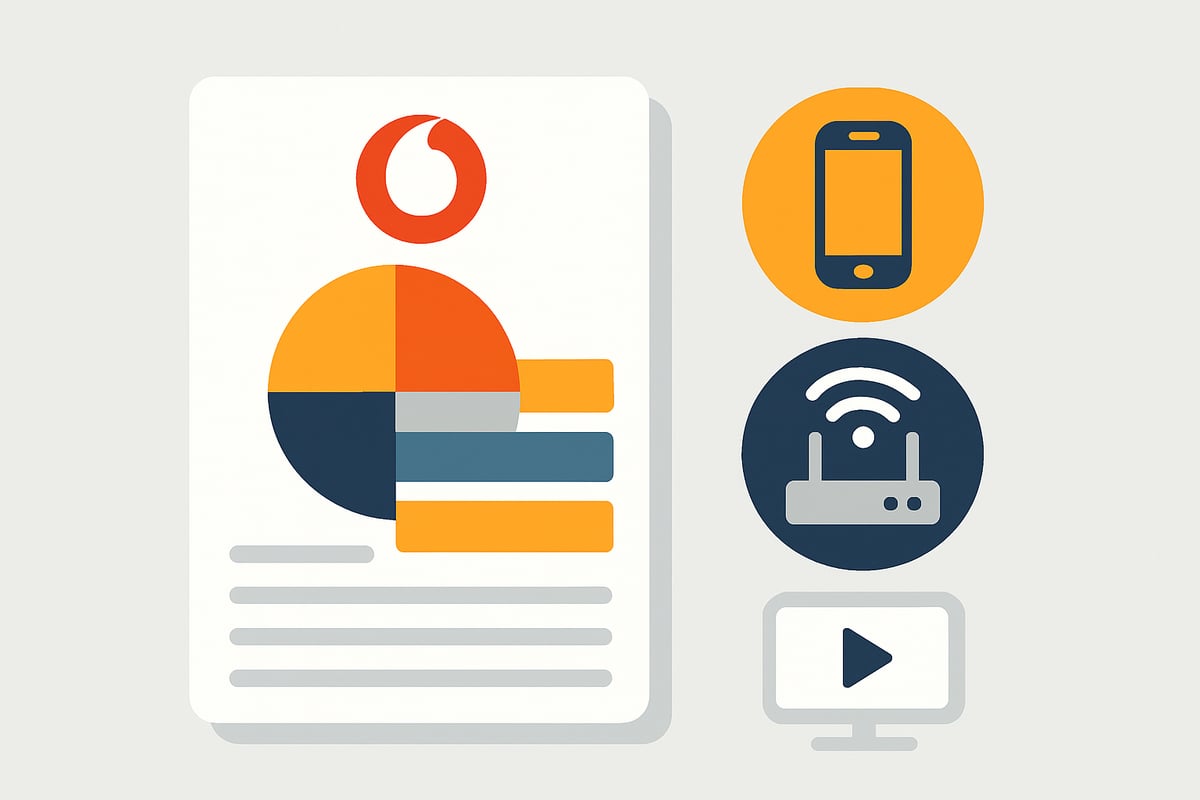
The search for your own Vodafone invoices can become a real test of patience every year. Many customers quickly lose track when it comes to billing, contract details, or sources of error.
In 2025, Vodafone’s digital customer portal brings many new features. Billing processes are becoming more transparent and efficient, so you get clarity on all details faster.
Those who understand their bills can immediately spot inconsistencies and save time, money, and nerves. This way, errors can be uncovered early and possible surprises avoided.
In this guide, you’ll get a comprehensive overview: from viewing your Vodafone invoices online to tips for avoiding errors, through to automation, legal notes, and answers to frequently asked questions.
Vodafone Invoices 2025: What’s New?
The management and understanding of Vodafone invoices will evolve significantly in 2025. With the new year, Vodafone is focusing on more transparency, digital services, and security. The goal: customers should be able to find their Vodafone invoices more easily, understand them better, and manage them more efficiently. Below you’ll learn what is changing specifically and how you benefit.
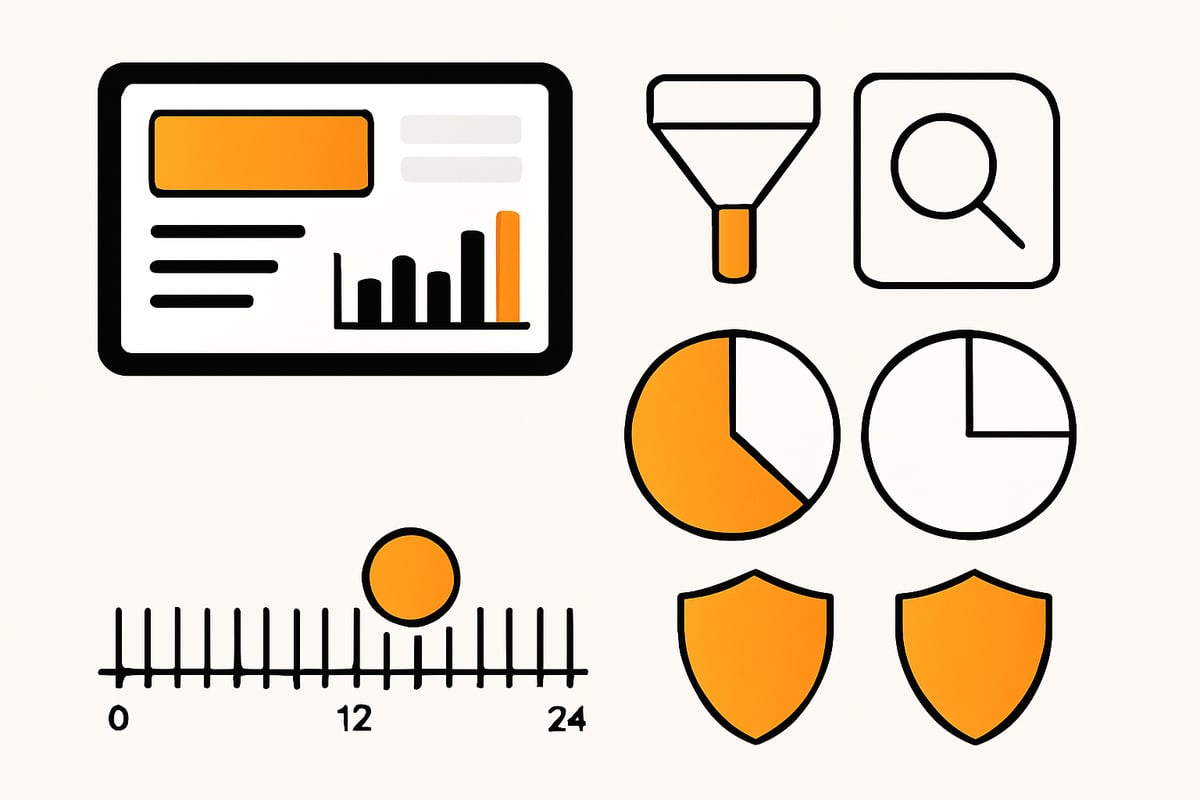
New features in the MeinVodafone portal
In 2025, the MeinVodafone portal includes numerous improvements that make handling Vodafone invoices much easier. Navigation has been revised so you can get to your invoices faster. Thanks to new filters, you can search specifically for certain periods, contracts, or amounts.
A highlight: mobile invoices can now be accessed retroactively for up to 24 months; for DSL and landline, 13 months are available. Mobile optimization ensures that you can conveniently use all functions on your smartphone and tablet. According to user surveys, the number of customers using digital invoice services for Vodafone invoices is continuously increasing. This gives you more control and a better overview of your costs.
Differences between mobile, DSL, landline, and TV invoices
Not every Vodafone invoice is structured the same. Depending on the contract type, the period, retention duration, and displayed data differ. Mobile invoices, for example, are available online longer than DSL or landline bills.
On mobile invoices, you will usually find connection overviews and device prices, while on landline and TV invoices other items such as base fees, TV packages, or add-on services appear. For customers with multiple contracts, it’s important to know the differences in Vodafone invoices to keep an overview at all times. This way, you can search specifically for certain contracts or services and detect errors more quickly.
Digital vs. paper invoice: pros and cons
More and more customers are choosing the digital version of their Vodafone invoices. The advantages are obvious: faster access, less paperwork, and a contribution to environmental protection. Those who use digital invoices can retrieve, store, or forward them online at any time.
However, the switch takes some getting used to for some, as digital know-how is required and archiving must be done independently. The paper invoice remains an option, for example for customers without regular internet access. The share of digital Vodafone invoices is growing every year, also because from 2025 the e-invoice obligation for companies from 2025 applies to many businesses. This makes the switch sensible and future-proof.
| Advantage | Digital invoice | Paper invoice |
|---|---|---|
| Access | Immediate, everywhere | By mail only, possibly delayed |
| Environment | Resource-friendly | Paper consumption |
| Archiving | Independent, flexible | Physical, limited |
Security and data protection for Vodafone invoices
Protecting your data is top priority with Vodafone invoices. Vodafone uses modern encryption and secure two-factor authentication. Your invoices are stored in compliance with the GDPR and can only be viewed by you in the customer portal.
Make sure to update passwords regularly and do not send sensitive documents unencrypted. If you suspect data misuse with Vodafone invoices, Vodafone recommends contacting customer service immediately and blocking access. With these measures, you are well prepared for invoice management in 2025.
Step by step: View and manage Vodafone invoices online
Do you want to manage your Vodafone invoices online and are looking for a simple, secure solution? With the MeinVodafone portal, it’s done quickly in 2025. The following steps show you how to best master registration, navigation, and management.
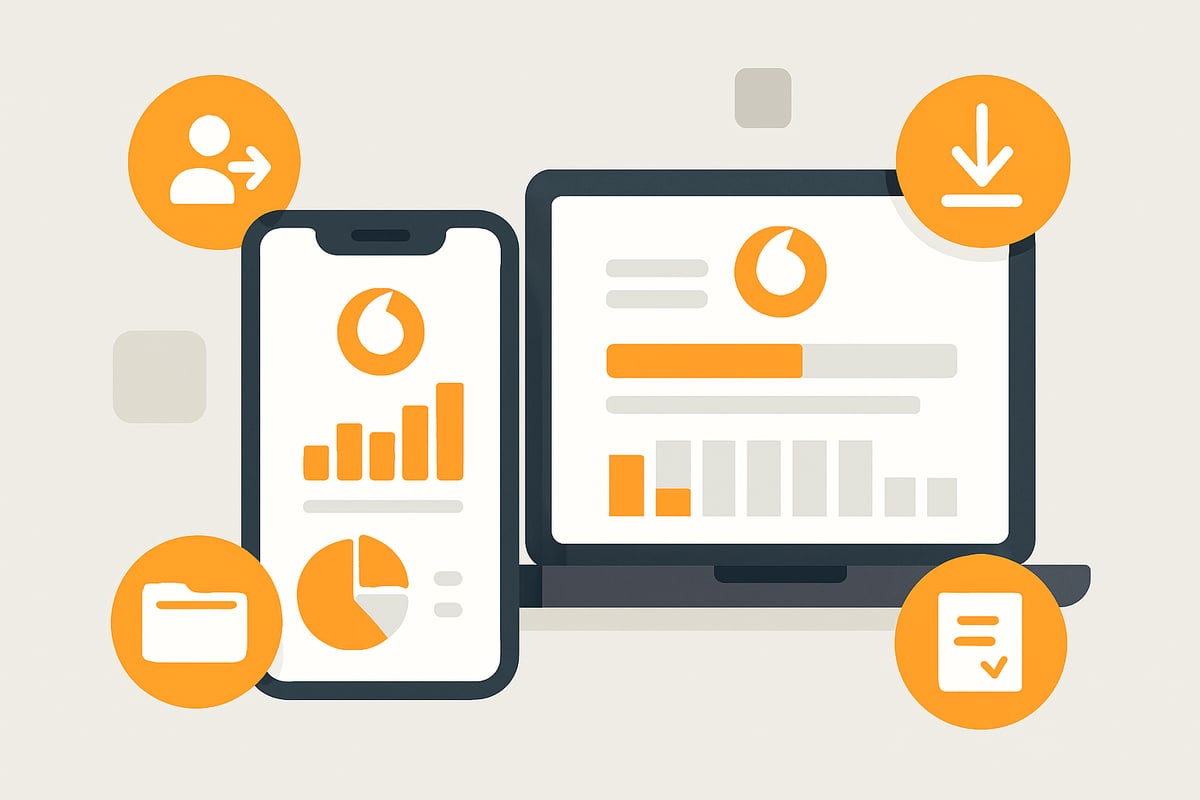
Registration and login in the MeinVodafone portal
To manage Vodafone invoices digitally, start by registering in the MeinVodafone portal. Visit the website or use the app and follow the registration process. You’ll need a valid email address and your contract details.
Choose a strong password and regularly update your contact details. After successful registration, log in with your credentials. Tip: A password manager helps manage secure passwords and simplifies login to the portal.
The number of online registrations for Vodafone invoices is steadily increasing. This way, you have access to your bills anytime and anywhere.
Find contracts and invoices in the dashboard
After logging in, you’ll find your Vodafone invoices under “My products” and “My invoices.” The navigation is clear: mobile, DSL/landline, and TV are displayed separately.
Use filters or the search function to search specifically for certain periods or contracts. The invoice archive is particularly practical for finding older invoices. This way, you always keep an overview, even when managing multiple contracts.
Thanks to the structured overview, you save time and find all Vodafone invoices in no time.
View, download, and print an individual invoice
Do you want to view or save a specific Vodafone invoice? Click on the desired invoice in the portal to display details. For your own records, you can download invoices as PDFs.
The portals offer various file formats compatible with common programs. If you need a printout for tax purposes or your employer, you can print directly from your browser.
Tip: Regularly download your most important Vodafone invoices and save them locally so you can access them at any time.
Invoice archive and retention periods
Vodafone invoices remain available in the portal for different lengths of time: mobile invoices for up to 24 months, DSL/landline for up to 13 months. For private customers, this is usually sufficient, but business customers should observe the statutory retention periods.
Use export functions or save PDFs in the cloud. Some customers wonder how to find or archive expired invoices again. In the Vodafone Community: Discussions on invoices and archiving you’ll find many practical tips and experiences from other users.
Well-thought-out digital filing ensures that your Vodafone invoices are always at your fingertips.
View contract details and tariff information
In addition to Vodafone invoices, you’ll also find all contract details in the MeinVodafone portal. Here you can see terms, current tariffs, and booked options.
You can adjust tariffs or book add-on options directly. In the DSL area, for example, a bandwidth adjustment is possible. This way, you control your costs and ensure you’re always using the right services.
The overview of your Vodafone invoices and contract data brings maximum transparency and control to your digital administration.
Structure and understanding of the Vodafone invoice
Vodafone invoices give you a detailed overview of your monthly costs and services. Those who understand the structure quickly see where the money goes and can more easily spot deviations or errors. In this section, you’ll learn how an invoice is put together, how to read taxes and discounts correctly, and what to look out for if anything is unclear.
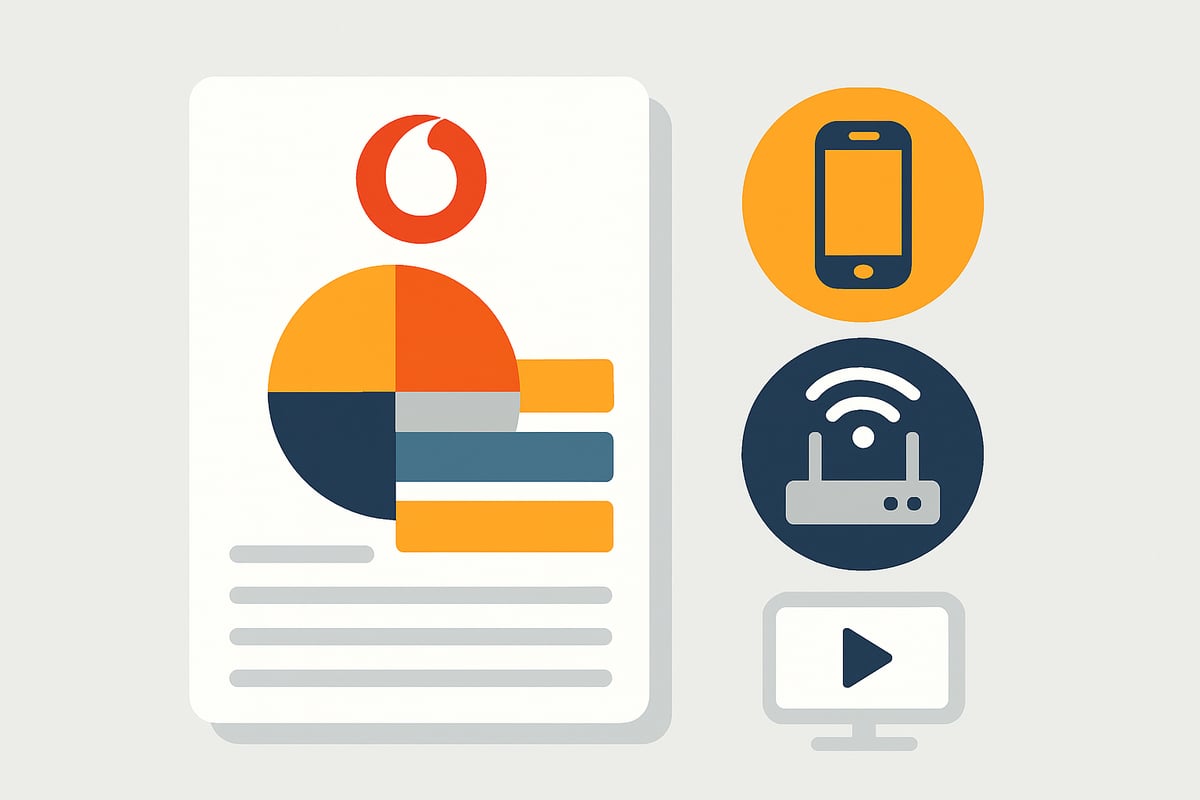
The most important items on a Vodafone invoice
Every Vodafone invoice contains certain core items you should know. These include:
- Base fees for your tariff
- Add-on services such as data packages or TV options
- Discounts and promotional prices
- One-time charges, for example for devices
Depending on the contract type, the details differ: mobile invoices often list connection costs or roaming fees, while for DSL/landline the device price and service flat rates dominate. An example: the item “connection costs” shows how many minutes you called outside your flat rate. For a detailed overview of all items and their meaning, the Vodafone Help: All about your bill is recommended. This way, you always keep track of your Vodafone invoices.
Correctly interpreting taxes, fees, and discounts
An important part of every Vodafone invoice is the taxes and fees listed. VAT is shown separately so you can use it for your bookkeeping. Special fees such as chargeback fees or shipping flat rates appear as separate items. Discounts, for example through promotions or bundle offers, are displayed transparently and usually have a limited duration.
Note that time-limited discounts expire automatically after the end date and costs can increase. Therefore, regularly check whether all granted discounts appear correctly on your Vodafone invoices. A tip: Keep a list of ongoing discounts and their expiration dates to avoid surprises.
Common sources of error and how to spot them
Errors can also occur on Vodafone invoices. Typical causes are tariff changes, incorrectly booked options, or duplicate charges. Common sources of error:
- Add-on options that continue to be charged after a tariff change
- Roaming fees that don’t match the booked package
- One-time device charges that appear twice
A look at the community shows: many users ask about duplicate charges or unexplained add-on costs. Therefore, check each Vodafone invoice carefully. Compare the listed services with your contract data and your usage behavior. This way, you’ll spot errors early and can respond quickly.
What to do if there are ambiguities or errors on the invoice?
If you notice discrepancies on your Vodafone invoices, you should proceed systematically. First, note the items in question and check them against your contract documents. The next step is to contact customer service, either by phone, via chat, or through the community.
Important: Have your invoice number, contract details, and a brief description of the error ready. Document all contacts and responses in writing. Observe deadlines, as complaints usually have to be made within a few weeks. A practical example: many customers were able to successfully correct incorrect one-time charges through a quick written complaint. If you are unsure, it’s always worth taking a second look at your Vodafone invoices.
Automation and digital workflows around Vodafone invoices
Managing Vodafone invoices will be easier than ever in 2025. Digital tools and automated workflows help you save time and avoid errors. With clever automation, you can optimize the entire invoicing process and always keep an overview.
Automate invoice download and archiving
Many users still download their Vodafone invoices manually. This is time-consuming and error-prone. Instead, you can automate the download and archiving.
- Email forwarding: Automatically filter incoming invoice emails into specific folders.
- Cloud storage: Use services like Dropbox or Google Drive for automated filing.
- Backup tools: Schedule regular backups for maximum security.
With these methods, you can find your Vodafone invoices at any time and save valuable minutes in everyday life.
Integration into accounting and document management systems
Automated workflows go one step further. Many accounting programs offer interfaces to import Vodafone invoices directly.
- DATEV or Lexware integration: invoices end up in the system automatically.
- Automatic assignment to cost centers or projects.
- Tax advisors receive all documents without manual intermediate steps.
This integration of Vodafone invoices is particularly worthwhile for self-employed people or companies with a high volume of documents.
Automatically retrieve Vodafone invoices with filehub
With filehub, you can fully automate Vodafone invoices. The platform connects directly to your MeinVodafone portal and retrieves new invoices independently. The documents are securely archived and can be flexibly integrated into workflows.

You don’t need any programming knowledge, and filehub is GDPR-compliant. This is a real productivity gain, especially for companies, teams, or self-employed people who manage many Vodafone invoices. Thanks to automatic filing and monthly archiving, the tedious manual downloading is eliminated.
Mobile apps and notifications for incoming invoices
Even on the go, you always have your Vodafone invoices in view. The Vodafone app notifies you via push as soon as a new invoice is available. With calendar and reminder functions, you won’t miss any payment deadline.
This keeps you up to date and allows you to check or download your Vodafone invoices directly from the app. This makes invoice management flexible and stress-free, no matter where you are.
Legal notes and frequently asked questions about Vodafone invoices
Vodafone invoices are subject to clear legal requirements. Whether private or business, as a customer you must know certain mandatory information, payment deadlines, and legal frameworks. Below you’ll find the most important details on structure, processing, and frequently asked questions about Vodafone invoices. This way, you are always on the safe side legally.
Legal requirements for invoices (e.g., VAT, mandatory information)
Every Vodafone invoice must contain certain mandatory information to be legally valid. This includes the name and address of Vodafone as well as of the invoice recipient, invoice date, service period, a consecutive invoice number, and the stated VAT amount.
Additional requirements apply to business customers: the issuer’s tax number or VAT ID must appear on the invoice. Private customers usually don’t need this information for tax purposes but should have it on hand if needed. Make sure all data is complete and correct, because only then is a Vodafone invoice also tax-deductible.
A complete and correct Vodafone invoice is particularly important if you want to use it for accounting or tax returns. Therefore, regularly check the mandatory fields and store the documents according to legal requirements.
Payment methods, due dates, and dunning procedures
Various payment methods are available for Vodafone invoices: SEPA direct debit, bank transfer, or credit card are the most common options. The due date is usually clearly stated on the invoice and is typically 14 days after the invoice date.
If you miss the deadline, Vodafone may charge reminder fees and temporarily block the connection. In the case of repeated late payments, even a collection procedure may be initiated. To avoid dunning costs, it’s advisable to set up a standing order or use SEPA direct debit.
A clear table of payment methods and deadlines:
| Payment method | Deadline | Advantages |
|---|---|---|
| SEPA direct debit | 14 days | Automatic, secure |
| Bank transfer | 14 days | Flexible |
| Credit card | 14 days | Fast, digital |
This way, you always keep track of Vodafone invoices and don’t fall into arrears.
Handling contract changes and special terminations
Contract changes such as tariff changes, contract extensions, or terminations have a direct impact on your Vodafone invoices. If a tariff is terminated early, for example, billing is usually done pro rata. Special terminations, for example due to moving or death, are subject to special rules.
Particularly important: After every contract change, check your next Vodafone invoice for correctness and complete billing. If anything is unclear, it’s worth looking at external information sources such as Changes at Vodafone: New customer numbers and invoice changes to stay informed about current updates.
With this knowledge, you can review your Vodafone invoices in a legally compliant and transparent manner even in the case of complex contract changes.
Frequently asked questions from the Vodafone community
Many customers ask similar questions about Vodafone invoices. Here are the top 5 from the community:
- Where can I find older Vodafone invoices? In the MeinVodafone portal under “My invoices,” there is an archive where you can search retroactively for up to 24 months.
- What to do if access to the portal is not possible? Contact customer service by phone or chat to clarify alternative ways to access invoices.
- How do I efficiently manage multiple contracts? Various contracts can be centrally consolidated and managed in the portal.
- Can I export Vodafone invoices collectively for tax purposes? Yes, use the export function in the customer portal. This makes it easier to hand them over to your tax advisor.
- Where can I find help with specific problems? The Vodafone community and the official help pages offer numerous solutions and tips.
With these answers, you are well prepared for the most common practical cases related to Vodafone invoices.
Tips and best practices for handling Vodafone invoices
The right approach to Vodafone invoices saves not only nerves but also real money. Clear routines ensure that you always keep an overview and don’t miss any deadlines or important information.
Regular checking and reconciliation of invoices
Monthly review of your Vodafone invoices is the most important step for error-free billing. Compare the current amounts with your own records and check whether all booked services have been billed correctly.
Use a checklist for control:
- Are base fees and discounts correct?
- Have all add-on options been billed correctly?
- Are there any unexpected one-time charges?
This routine helps you spot inconsistencies early and react immediately if necessary. It protects you from nasty surprises at the end of the year.
Efficient filing and archiving—analog and digital
Order is half the battle, especially for Vodafone invoices. Set up a clear folder structure, whether digitally in the cloud or classically on your PC. For business customers, separation by year and contract is recommended; for private customers, a monthly filing is usually sufficient.
Digital archiving offers many advantages: fast access, automatic backups, and less paper. If you are looking for more tips on digital filing, you’ll find them in the article Efficient document management.
This way, you can find any invoice in seconds and have all documents at hand—also for questions from the tax advisor or in case of warranty.
What to do if there are problems with the MeinVodafone portal?
Technical problems with the portal can make access to Vodafone invoices difficult. Common sources of error are login problems, missing contract links, or display issues in the dashboard.
Possible solutions:
- Clear the browser cache and reload the page
- Try a different browser or your smartphone
- Have passwords reset via customer service
If that doesn’t help, contact Vodafone customer service directly or use the community forums. Document every contact to keep track in case of follow-up questions.
Using Vodafone invoices optimally for tax and accounting
Vodafone invoices are often relevant for tax returns, especially if you are self-employed or want to deduct expenses. Download all receipts regularly and collect them centrally to provide them to your tax advisor.
Many accounting programs today offer interfaces for importing invoice PDFs. Further tips on integration into digital accounting can be found in the article Digital accounting and invoices.
This saves you time on taxes and significantly reduces the effort for the annual settlement.
Do you want not only to understand your Vodafone invoices in 2025, but finally also to organize and archive them with ease? Then filehub is your best choice: the platform helps you reduce annoying paperwork, automatically retrieve digital invoices from the MeinVodafone portal, and integrate them directly into your workflow—without technical know-how but with maximum data security under the GDPR. This saves you valuable time and ensures you always keep an overview, whether for accounting, taxes, or simply for peace of mind. Just try it yourself and test filehub.one for free now.

